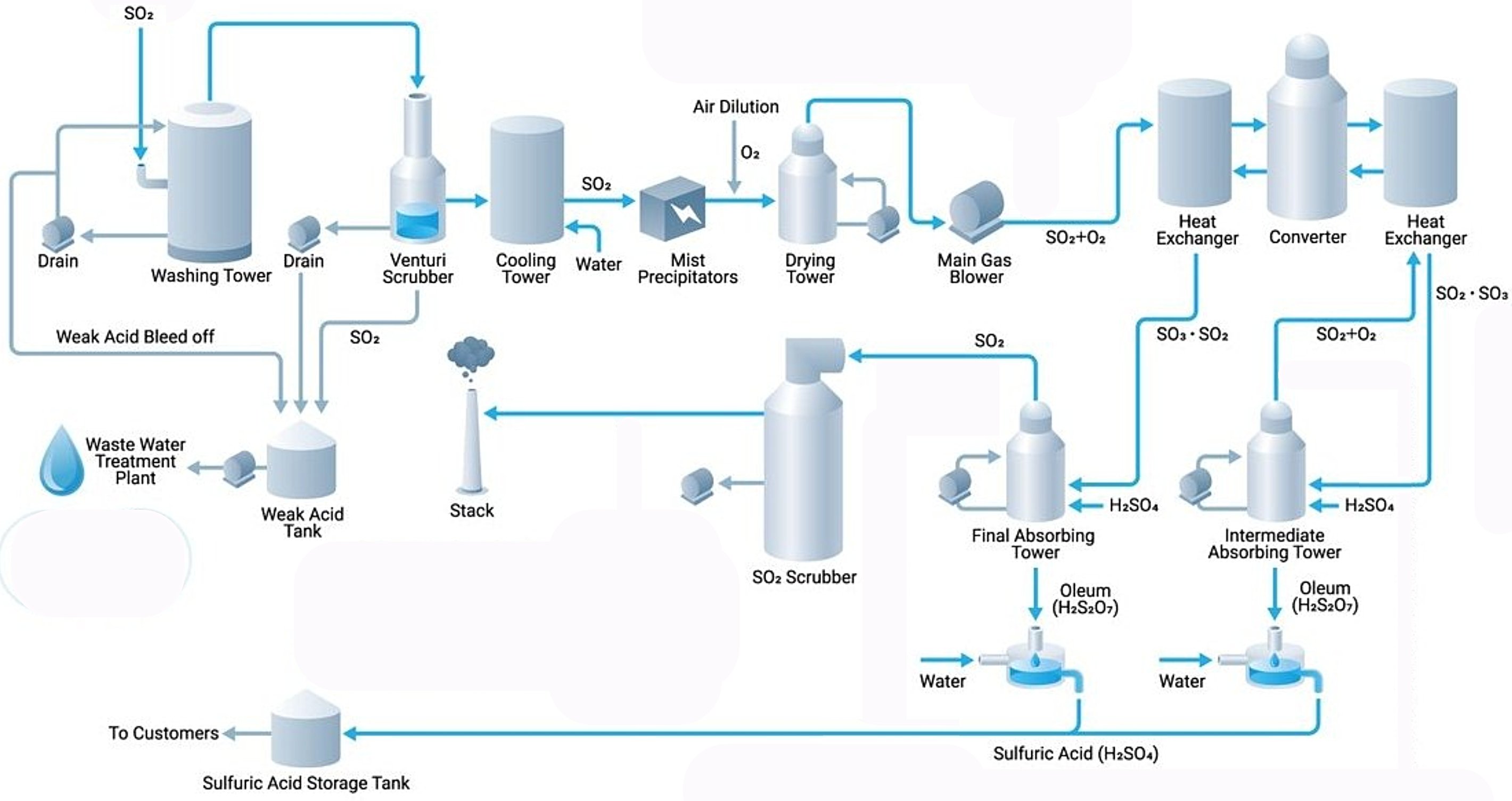Sulfuric acid is predominently produced via the Contact Process
- Technology Type
- Sulfuric Acid Technology (Lead Chamber & Contact Processes)

The first commercially successful method for producing sulfuric acid was developed in 1746 by English physician and chemist John Roebuck (1718–1794). Roebuck's innovation, known as the lead chamber process, involved producing acid in large containers lined with lead, which were stronger, less expensive, and significantly larger than the previously used glass vessels. This breakthrough enabled the effective industrialization of sulfuric acid production, and the process remained the dominant manufacturing method for nearly two centuries, accounting for approximately 25% of global sulfuric acid production as late as 1946.
The contact process was invented around 1831 by Peregrine Phillips, a vinegar manufacturer from Bristol, England, who received British Patent No. 6096 for his innovation. Phillips described the instantaneous union of sulfur dioxide with atmospheric oxygen when the mixture passes over platinum heated to a strong yellow heat, with the resulting sulfur trioxide rapidly absorbed by water to form sulfuric acid. Although initially overlooked due to limited demand for concentrated sulfuric acid, the contact process gained prominence following the development of synthetic dyes and other industries requiring high-strength acid.
#sulfuricacid #leadchamberprocess #sulfurdioxide #sulfurtrioxide #contactprocess






